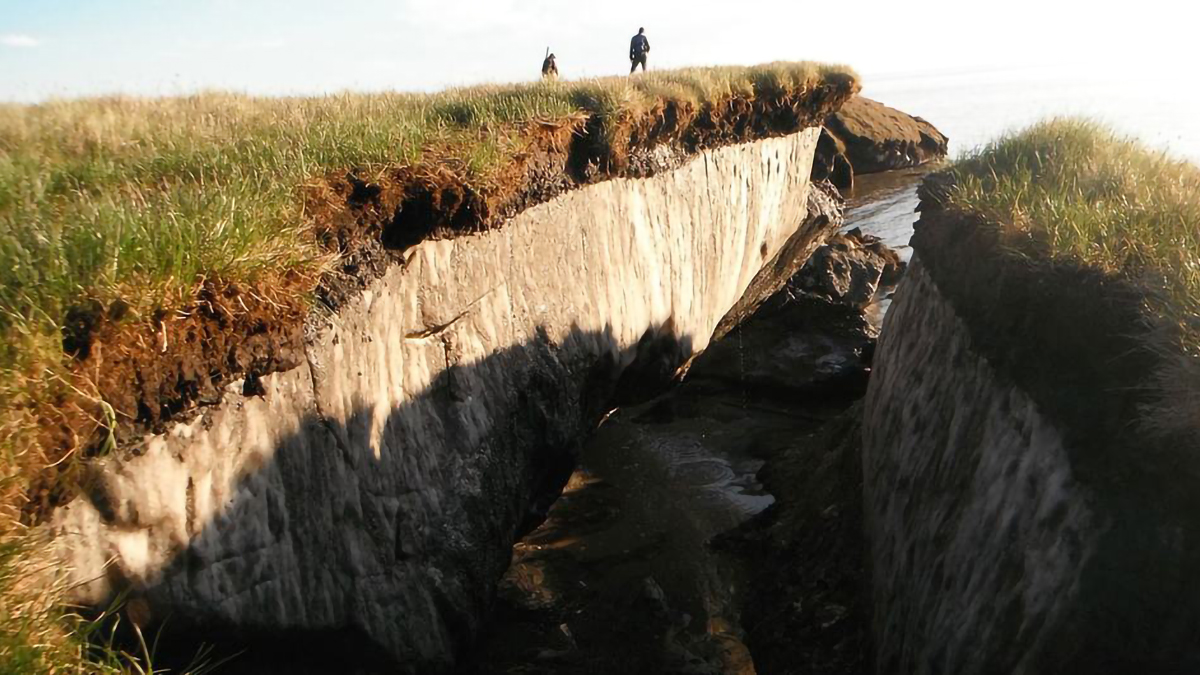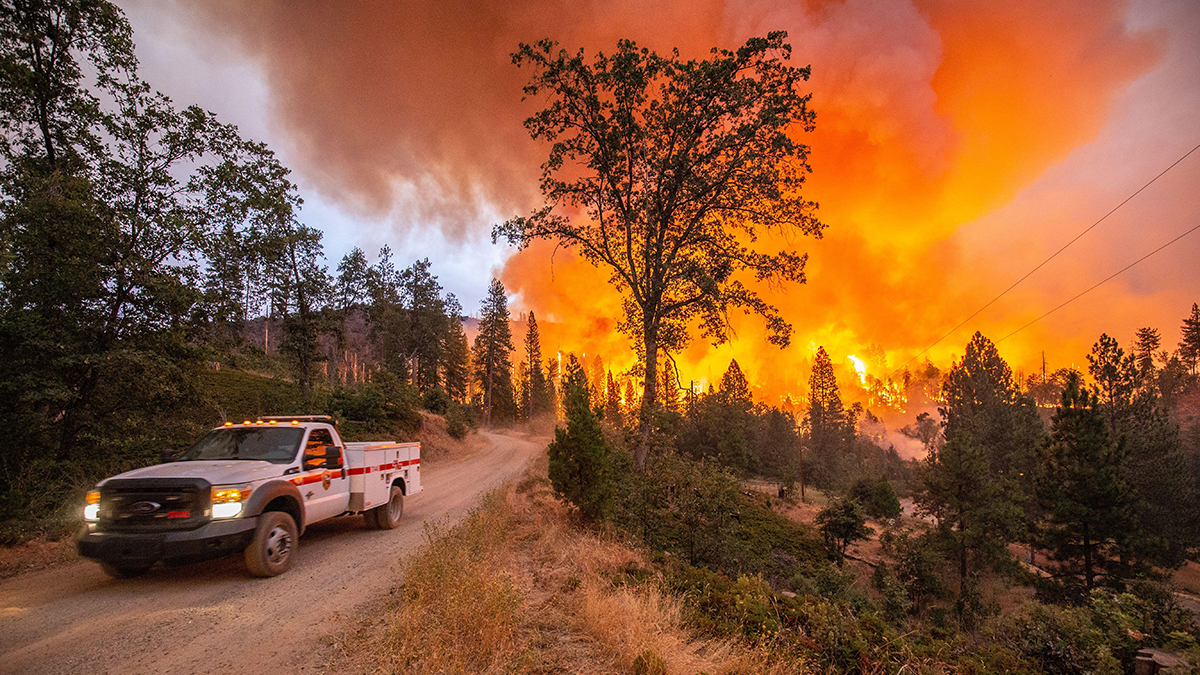Slow-onset climate hazards pose unique risks
Risk financing, such as insurance, can build resilience to climate-related hazard events
Many of the most devastating impacts of climate change, especially for coastal and island nations, will be chronic and slow-onset
Sudden and slow-onset climate hazards are having devastating and widespread impacts on lives, livelihoods and nature, especially coastal and island nations, including small island developing states, because of their geographic location and high levels of exposure and vulnerability to these hazards.
These countries are also home to robust natural capital that underpins their economies and food security and serve as nature-based solutions to the physical and economic impacts of climate change. For example, coral reefs help to protect against sea level rise, storm surge inundation, beach erosion and wave-induced damage.
Unfortunately, these same ecosystems are at risk from climate-related hazards, reducing their ability to provide for their many beneficiaries; the loss of natural capital is one of the greatest risks to society and the global economy as it accelerates climate change and threatens the health of ecosystems that provide critical services.
Risk financing, such as insurance, can build resilience to climate-related hazard events by mitigating the impacts through pre-arranged finance, ensuring liquidity is available to respond and recover.
The insurance industry is well placed to inform the mechanisms that would allow for transparent, objective and appropriately targeted flow of finance to address immediate needs after sudden and slow-onset events
Pre-arranged, trigger-based finance, including parametric insurance, is an especially useful instrument; parametric insurance provides payouts based on the occurrence and intensity of an event (that is, a payout is “triggered” if pre-agreed event parameters are met, such as wind speed exceeding a certain threshold), as a proxy for impact and loss, rather than indemnifying against actual, assessed loss.
The focus on hazard rather than loss creates a broad range of potential applications that have not traditionally been served by indemnity insurance. For example, parametric insurance can be used to protect natural capital (for example, coral reefs) from damaging events such as cyclones and heavy rain by providing rapid funding to respond (that is, minimise non-economic losses through immediate reef restoration). Other benefits of parametric insurance include its speed, with the claims payment process usually completed within days to a couple of weeks of a triggering event; transparency, as a result of the reliance on independent, third-party data; and a reduction in frictional costs, owing to the simplicity of the contractual arrangements and payout process.
MAR Insurance Programme
One successful parametric insurance example to highlight is the MAR Insurance Programme, launched in 2021. Developed by the Mesoamerican Reef Fund (MAR Fund) and WTW’s climate and resilience hub and co-funded by the InsuResilience Solutions Fund (building on the early support of Global Affairs Canada via the Ocean Risk and Resilience Action Alliance), the ground-breaking programme uses parametric insurance to provide timely and reliable funds for emergency action in the aftermath of a hurricane across the critically endangered 1,000 km reef system spanning Mexico, Belize, Honduras and Guatemala.
How does it work? WTW designed a parametric structure that maximises the efficiency of the programme by ensuring the payout amounts align with the resources required to engage in immediate reef response depending on the severity of the event; the payout amount increases the greater the hurricane intensity and the closer the hurricane passes to the reef. It did this with a “cat in nested circles” approach, where an innermost circle covers the core Mesoamerican reef areas and three other progressively larger circles sit around these.
When Hurricane Lisa passed directly over Belize’s Turneffe Atoll as a category one hurricane on November 2, 2022, the insurance programme demonstrated its value. Calculations completed by WTW as the calculation agent confirmed the wind intensity reached 70 knots, triggering a $175,000 payout, which MAR Fund received in full within just two weeks of the event. Forty-eight hours after receiving the payout, MAR Fund transferred the funds to the trained brigades and, within the space of a month following the event, 13 brigade members were deployed to two Turneffe Atoll sites to rapidly assess damage to the reef and subsequently carry out the first phases of response activities as outlined in a pre-agreed response protocol. All of this was made possible because of the MAR Insurance Programme and the rapid liquidity provided from the payout.
Belize has recently been the pioneer of further significant innovations in the conservation and climate finance space, including the use of parametric insurance to protect sovereign debt repayments.
In November 2021 environmental-focused charity The Nature Conservancy (TNC) and the government of Belize announced the completion of a debt conversion for marine conservation deal. Belize repurchased $553m of privately held debt at a 45% discount through a blue loan arranged by TNC and the resulting $364m 20-year Blue Bond issuance arranged by Credit Suisse included a “credit wrap” (political risk insurance) provided by the US Development Finance Corporation and a “parametric policy” (resilience wrapper) designed and placed by WTW. In return, Belize committed to a number of conservation goals, including financing.
In the event of a hurricane that meets the parametric trigger criteria, the next semi-annual debt servicing payment the government of Belize must pay is waived and instead paid for via the parametric insurance payout from the insurer (selected via competitive broking process).
The payment can be triggered in several ways: 1) based on the intensity of the hurricane (minimum of category three) and proximity to economic hubs – meaning larger storms can be further away and still trigger payment; 2) the occurrence of two hurricanes of any intensity in the same 12-month period; or 3) a hurricane of any intensity accompanied by very heavy rainfall. In addition to freeing up capital for ongoing conservation investments and ensuring debt servicing payments are protected from key climate impacts, S&P Global Ratings increased Belize’s sovereign credit rating three steps from CC to B- after the debt restructuring.
While the application of parametric insurance in the climate space has focused primarily on sudden, shock events, many of the most devastating impacts of climate change, especially for coastal and island nations, will be chronic and slow-onset (for example, sea-level rise, coral bleaching, drought). Building on our experience designing bespoke pre-arranged, trigger-based solutions for a range of shock events, including those focused on ecosystem resilience, WTW has started to think about how to deploy most effectively the tools and analytics of the insurance industry for slow-onset events.
Term life model
One approach that could be deployed is a term life insurance-like model whereby one insures timing risk rather than the event itself – this could be a parametric insurance product that would trigger if sea level rise of a certain pre-agreed amount is exceeded within a certain period of time (for example, 30 cm by 2030). Then there are events such as coral bleaching, which sit between shock events and long-term changes, with the shock events becoming more common because of longer-term changes. For coral bleaching in particular, we have tested an ocean heatwave index, where early triggers are possible to drive anticipatory action (a form of forecast-based finance). For all these perils, both economic and non-economic losses can be captured.
These may sound like radical new ideas but in fact the concept of deploying the tools of the insurance industry for addressing slow-onset risk first appeared before the UN Framework Convention on Climate Change (UNFCCC) was even adopted. In 1991, the Alliance of Small Island States (Aosis) put forward the concept of an “international insurance pool” aimed at compensating low-lying islands for the loss and damage associated with sea level rise. However, this provision was not included in the UNFCCC when it was adopted in 1992.
Loss and damage – often understood as irreversible slow and sudden onset climate risk that materialises when the limits of (cost-effective) adaptation have been reached and breached – has since then featured within the UNFCCC context for decades, although few decisions have been taken to solidify how the multilateral community intends to respond. Fast forward to the 27th Conference of the Parties (Cop27) in Egypt in 2022, when a decision was taken on “funding arrangements for responding to loss and damage associated with the adverse effects of climate change, including a focus on addressing loss and damage”. As part of this decision, a transitional committee was called for to support the operationalisation of the new funding arrangements for responding to loss and damage and the associated fund.
Insurance industry’s role
Setting aside the politics of who will contribute financial resources to respond to loss and damage, we think the insurance industry is well placed to inform the mechanisms that would allow for transparent, objective and appropriately targeted flow of finance to address immediate needs after sudden and slow-onset events, including those that have an impact on ecosystems and the livelihoods that depend on their services.
In other words, insurance tools (and in some cases insurance products) that can include triggering of grant funding or other forms of capital – it does not have to be global, private risk capital – that are agreed in advance so funds can flow quickly after triggering events.
Such flows must complement, not replace, climate finance (for adaptation and mitigation), traditional humanitarian (for response) and development (for disaster risk reduction) funding and should also be aligned with anticipatory and early action investments so that the value of the rapid finance is fully captured (for example, through allowing for shock responsiveness to be built into social benefits programmes).
Sarah Conway is ecosystem resilience lead within disaster risk finance and parametrics and former lead climate finance negotiator for the US delegation to the UNFCCC, and Simon Young is co-lead for disaster risk finance and parametrics in WTW’s climate and resilience hub



